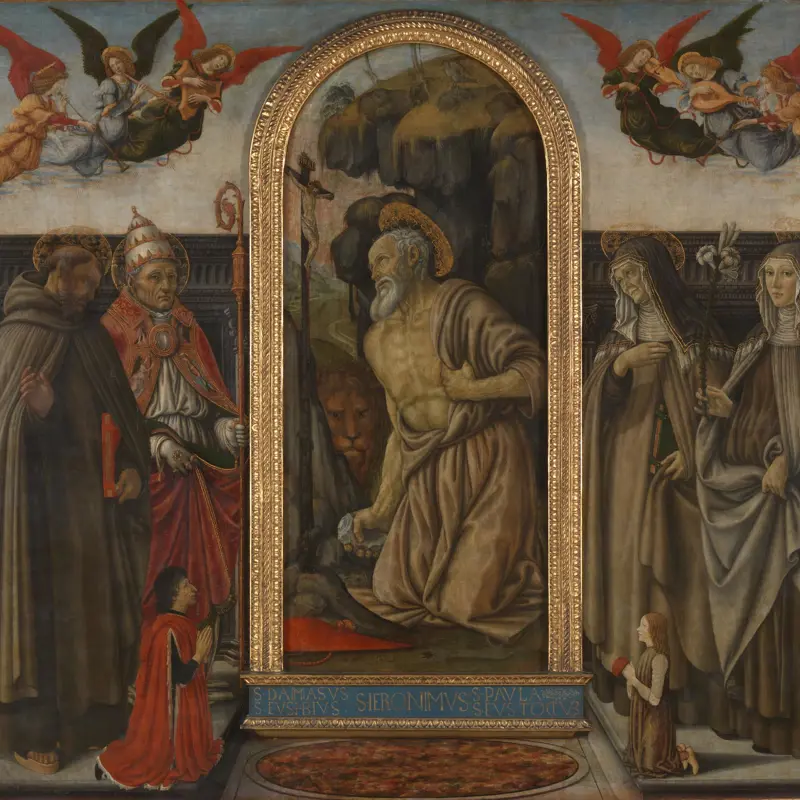Francesco Botticini, 'The Assumption of the Virgin', probably about 1475-6
About the work
Overview
Heaven and earth are united in this vast, dramatic scene. A dome-shaped vault has opened up in the sky to reveal Christ blessing the Virgin Mary. She kneels before him, her hands together in prayer. They are surrounded by ranks of neatly ordered angelic beings, saints and Old Testament figures: the ageing couple beneath the Virgin are Adam and Eve, ancestors of the human race according to the Bible, wearing camel-skin robes.
The Virgin has ascended after death to join this place full of clouds and golden light. Her empty tomb below has filled with lilies, to the amazement of the apostles who gather around it. The image is based upon a poem by the Florentine apothecary, writer and politician Matteo Palmieri, who is shown kneeling to the left of the tomb, opposite his wife Niccolosa. The poem described the pre-existence of the soul before birth. As this was considered heretical by some, the couples' faces (now restored) were scratched out in protest.
Key facts
Details
- Full title
- The Assumption of the Virgin
- Artist
- Francesco Botticini
- Artist dates
- about 1446 - 1497
- Date made
- probably about 1475-6
- Medium and support
- egg tempera on wood
- Dimensions
- 228.6 × 377.2 cm
- Acquisition credit
- Bought, 1882
- Inventory number
- NG1126
- Location
- Not on display
- Collection
- Main Collection
- Previous owners
- Frame
- 21st-century Replica Frame
Provenance
Additional information
Text extracted from the ‘Provenance’ section of the catalogue entry in Martin Davies, ‘National Gallery Catalogues: The Earlier Italian Schools’, London 1986; for further information, see the full catalogue entry.
Exhibition history
-
2015Visions of Paradise: Botticini's Palmieri AltarpieceThe National Gallery (London)4 November 2015 - 14 February 2016
Bibliography
-
1951Davies, Martin, National Gallery Catalogues: The Earlier Italian Schools, London 1951
-
1986Davies, Martin, National Gallery Catalogues: The Earlier Italian Schools, revised edn, London 1986
-
2001
C. Baker and T. Henry, The National Gallery: Complete Illustrated Catalogue, London 2001
About this record
If you know more about this work or have spotted an error, please contact us. Please note that exhibition histories are listed from 2009 onwards. Bibliographies may not be complete; more comprehensive information is available in the National Gallery Library.





